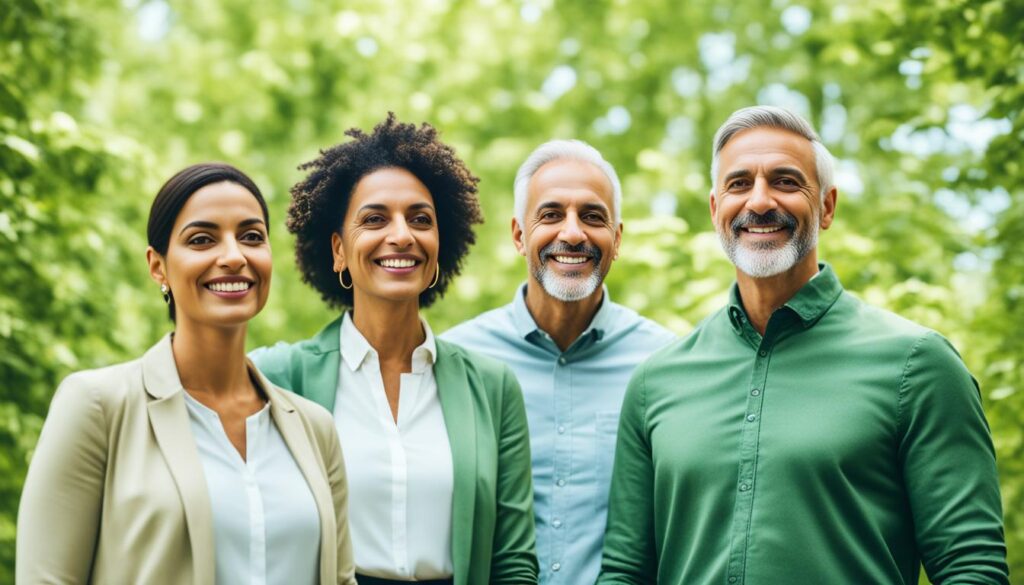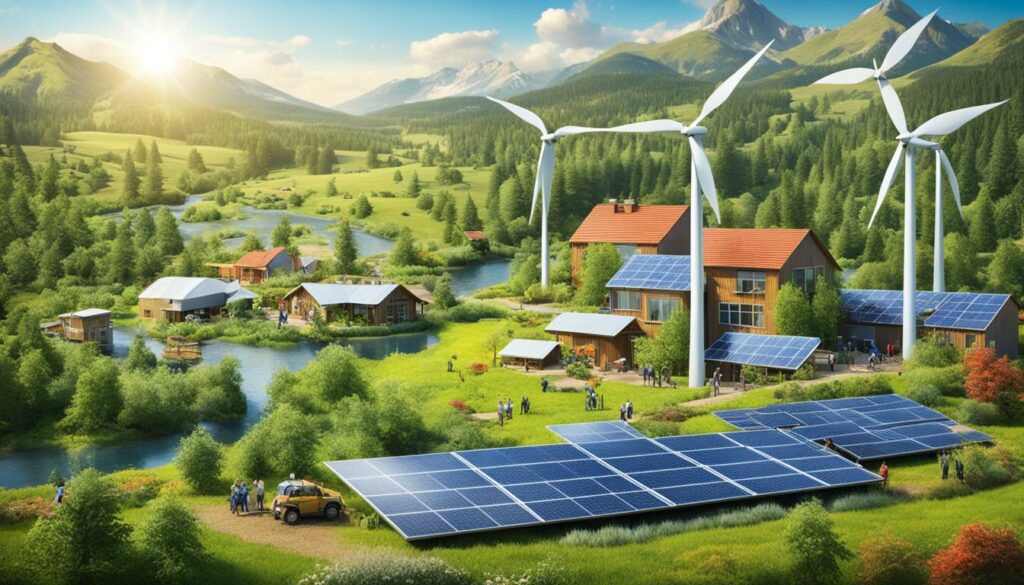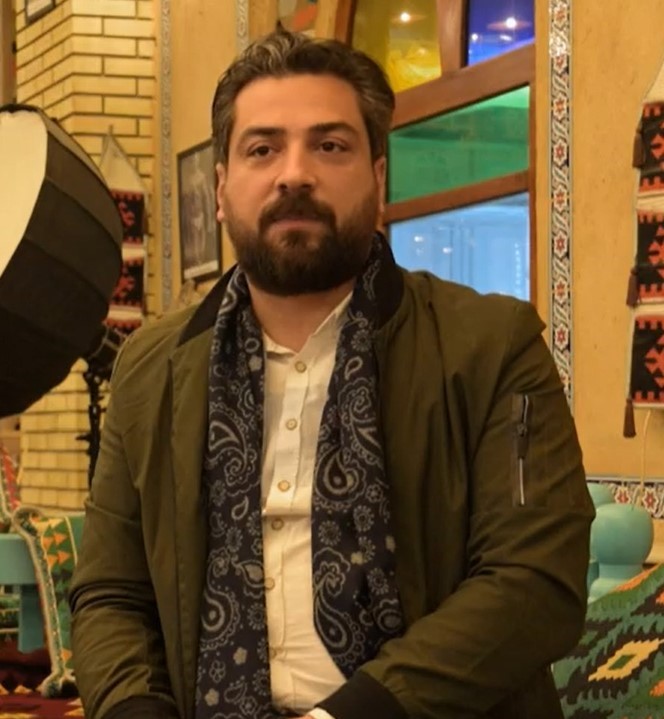The Biden-Harris Administration is putting a lot of focus on making environmental justice a key goal. They see that some communities suffer more from health, environmental, and economic issues1. In just his first week in office, President Biden acted. He signed an Executive Order, marking the start of a big push towards environmental justice1.
Now, there are important groups working on this. These include the White House Environmental Justice Interagency Council and the Advisory Council. Plus, there’s the Justice40 Initiative. It makes sure 40% of benefits from government efforts on climate and clean energy help communities in need1. Over 200 steps have been taken to fix problems from before and to set strong new rules to support environmental justice1.
Key Takeaways
- The Biden-Harris Administration has prioritized environmental justice, launching the most ambitious agenda in this area.
- The Justice40 Initiative aims to direct 40% of federal climate and clean energy investments to disadvantaged communities.
- The administration has taken over 200 actions to repair environmental damage and implement a robust regulatory agenda.
- New offices, strategies, and policies have been established across federal agencies to pursue environmental justice.
- The White House has created interagency councils and screening tools to identify and address environmental injustices.
Prioritizing Environmental Justice
The Biden administration puts a big focus on tackling environmental injustices. President Biden and Vice President Harris see that people of color and those with less money often suffer most. They face issues like toxic pollution, a lack of investment in vital networks, and more harm from climate change2. To make things fairer, the administration listens to these communities. It then aims to make their needs part of national decisions, policies, and investments.
The Biden Administration’s Commitment
Early on, the White House created two groups focused on environmental justice. These groups work to make sure everyone gets a fair chance3. The Attorney General of California, Rob Bonta, is also at the forefront. His Bureau of Environmental Justice tackles environmental unfairness in the state3.
Addressing Disproportionate Impacts on Marginalized Communities
The movement for environmental justice is getting stronger. People of color, those with less money, and other groups have become leaders2. There’s evidence that setting up hazardous waste sites and applying laws on the environment has hit them harder2. The Biden team wants to make things right with focused support and policies for these communities.
For instance, there’s the Inflation Reduction Act of 2022. It gives tax breaks for projects where jobs have been lost due to changes in the fossil fuel sector4. The Community Development Block Grant program also steps in. It encourages improving infrastructure, like setting up places for green tech startups to boost eco-friendly manufacturing4.
The administration’s efforts on environmental justice are key. By giving a voice to these often-ignored communities, Biden’s team aims for a more just and green future for everyone234.
Sustainable Public Procurement and Reporting
Changing how the government buys things can help our planet. The Biden administration is making strict rules for green purchases. They’re aiming to cut the carbon footprint and push others to do the same5. They also want to make reporting on being green easier and more useful for the public sector.
Green Criteria for Government Contracts
Buying things for the government is a big deal worldwide. In many countries, it’s up to 30% of all the buying. Green programs are there to lower bad emissions and use energy better6. The World Economic Forum found that buying green can actually make more money and cost less5.
Harmonizing Sustainability Reporting Frameworks
The government is getting better at watching and telling us how well they’re doing at helping the planet. Nordic nations are doing great at this. They give tips for other agencies to report better every year5.
| Challenges in Sustainable Procurement | Percentage of Companies Facing Challenges |
|---|---|
| Gaining buy-in from top executives | 63% |
| Limited time and resources for implementation | 72% |
| Getting support from suppliers | 54% |
| Handling data and data-handling skills | N/A |
Even with difficulties, many leaders see doing good as helpful to business. A lot of the problem comes from not having enough skills in handling the data5.
“In 2022, 96% of S&P 500 companies published sustainability reports, showing a significant shift towards sustainable practices.”5
Focusing on where we get things can save a lot of money. For example, Unilever saved over a billion dollars this way. A third of U.S. energy is used by industry. Doing things more sustainably can save energy and money5. Together, we’ve saved billions from using smarter energy5.
Buying goods wisely can be good for business, people, and the planet. Many company leaders are working hard to do this5.
A guide called the Sustainable Public Procurement handbook helps make buying in a green way easier. It talks about how to pick the right products like paint and cleaning supplies. This is key to greener buying7.
Ukraine started buying more wisely in 2014. They are using special programs to choose better goods. This includes products like paints and cleaners that are better for the earth7.
Initiatives for Enduring Environmental Impact
The Biden-Harris Administration is working hard on a big plan to help the environment for the long term8. They are focusing on fair treatment for everyone, promoting green buying and sharing info on what’s green, and getting everyone to join in on helping the climate. Their goal is to stop unfair differences, use the government’s buying power for good, and get people and companies to make a greener, fairer tomorrow.
In their push for a better planet, the team has a special plan called the Inflation Reduction Act. It puts money into fairness in the environment8. This act makes new programs to help those who need it most, like the Justice40 Initiative. It helps make sure that 40% of the good things that come from fighting climate change go to places that are struggling8. The act also pays for keeping an eye on air quality near big factories and puts air sensors in areas that need it most. Solar projects on houses that get help from the government can get a boost of 20% with this plan8.
Buying green and telling people about it is important too. They want to make rules for what’s okay to buy for the government9. This would help the government spend money on things that won’t hurt our planet. And it would also make it clear what businesses must say about how they’re helping the environment.
To really get everyone working on the climate, the government is backing big projects like the one at the Massachusetts Institute of Technology9. This project gives money to many groups looking into environmental issues. It helps students learn and works with lawmakers to take on climate change9. The government is also making sure that places where people live don’t suffer so much when the weather is extreme and is planting more trees in cities and towns to fight climate change8.
By making things fairer, using the government’s buying power, and getting people and businesses to help, the Biden-Harris team is taking a serious, all-angles look at how to deal with climate change and harm to our planet. Their work is set to make a lasting, positive difference to the environment, leading to a world that is both green and fair.
“Addressing the climate crisis and promoting environmental justice are not just moral imperatives, but also vital to the long-term health and prosperity of our nation. The Biden-Harris Administration’s initiatives are laying the groundwork for a more sustainable and equitable future.”
Promoting Whole-of-Society Engagement
Dealing with climate change is a big job. It needs everyone to step up. The Biden-Harris team knows we all must help. They want each of us to change how we live and tell leaders what we think10. People are ready to do their part if they think it helps the country lower emissions10.
The team also wants us to talk online and in groups. They believe this lets us help solve problems about our planet10. Governments can show people why their choices matter. They can encourage feats like ethical investing, using electric cars, updating our homes, or eating differently10.
Citizen Participation in Climate Action
Our voices count a lot in the climate fight11. The UN created big goals in 2015 after hearing from everyone for over two years. Even the world’s poorest people shared their ideas11. This open talk led to better climate rules than usual10.
Officials can help us do better by teaching and giving us tools. This way, we get why our actions matter and make greener choices10. Little pushes to be more eco-friendly can work better than just rules10.

Together, we’re strong in fighting climate change10. Everyone doing their share matters a lot. This is key to reaching tough goals set by the Biden-Harris team and others around the world12.
Ethical Consumption and Behavior Change
Lately, businesses must be sustainable to keep their good name and make money13. Luckily, laws, CSR, and what people think are all moving us towards real sustainability14.
Consumers are key in pushing for better behavior, wanting products that are eco-friendly13. For example, many people now prefer products that are sourced ethically. They also want their shopping choices to reduce their carbon footprint13. Plus, lots are okay with spending more on eco or well-packaged products13.
This eco-friendly trend isn’t just in some areas but crosses all kinds of businesses13. Sales of fair trade goods are up, showing a big interest in how products are made13. Also, many are open to buying used stuff to cut waste and help the planet13.
Choosing green packaging is big for many buyers now13. Most say they’d pick a product with green wrapping over not. This reflects the general move towards buying in eco-conscious ways13. The demand for organically grown products is also increasing fast13.
Yet, going the ethical route isn’t always easy13. The majority find it hard to know what’s truly ethical to buy. This calls for better labels and open information about products13. Also, more than half feel there aren’t enough green options out there. This underscores the value of boosting sustainable choices online and in local communities13.
The road to ethical shopping has bumps, but the future looks promising14. People are getting wiser and considering a product’s whole impact before they buy13. If we all work together – governments, schools, and industries – we can shape a future with more responsible and eco-friendly shopping habits15.
Ensuring a Just Transition
Our move towards a sustainable, green economy must be fair for all. The Biden-Harris Administration knows we need to help communities and workers. This will make sure the shift is right for everyone16.
The Climate Promise initiative is helping many countries make their green changes fair. Places like Serbia, Costa Rica, and Zimbabwe are looking closely at the impacts. They’re using tools to see how the shift will affect people’s lives16. South Africa and Antigua and Barbuda are showing how everyone can work together for a good change16.
In Ireland, they’re working on a big plan for fair green changes by 2050. Their plan, the Climate Action Plan 2023, is built on key ideas such as working together and talking about it. They want the move to be fair and to help improve everyone’s skills17. They’re also setting up a group called the Just Transition Commission. This group will give advice on making climate plans fair for all17.
New York is also getting ready for a green future in a fair way. They have a Just Transition Working Group working hard. This group is looking at how to help workers move to new jobs in the green economy18. They’ve started seven Advisory Panels to look at different jobs and how they can help workers. Their goal is to support those who might lose their jobs by creating new, good jobs18.
It’s all about helping workers and communities. We aim to make a green economy that’s good for everyone. This means less poverty and better chances for all. We’re working to leave no one behind in this big change16.

“The transition to a green economy must ensure that the costs and benefits are fairly distributed, and that no communities or workers are left behind.”
Corporate Sustainability Initiatives
More and more companies are seeing the importance of being eco-friendly. This is shown in new laws, a focus on being a good global citizen, and changes in what society values. For example, the EPA now needs landfill operators to work on reducing methane gas. This means it will cost more for businesses, with landfill fees going up about 2.8% each year since 201619. Companies that take trash away from places might also ask more money, up to 20% more each year, because it costs them more to do their work19.
EPA’s Methane Emission Reduction Mandates
Recently, the EPA told landfill operators they need to cut down on their methane gas emissions19. This new rule will change how much businesses pay and how they run. As a result, the costs might end up being passed down to customers19.
Innovative Recycling Solutions
Companies are finding clever ways to deal with all this. RMIT University came up with a way to use 4.3 billion face masks in making roads, which could make building roads 30% cheaper19. Bacardi wants to get rid of 80 million plastic bottles by 2030. They plan to do this by using bottles that are made from plants and can break down on their own19. Plus, adidas and Allbirds worked together to make a shoe that’s really eco-friendly. This shoe only has a carbon footprint of 2.94 pounds19.
All these efforts mark a move toward making a circular economy. This means less trash and more reusing and recycling. New Balance promises to use half recycled polyester and totally eco-friendly leather in their shoes by a set year19. Chipotle has already beaten its goal for 2022 by buying over 57 million pounds of food that’s produced in an eco-friendly way19. IKEA is also doing its part by buying back over $1.25 million worth of old products by November 202219. And Unilever plans to reduce the waste from its factories by half by 202519.
The EPA wants to see a 50% recycling rate by 2030. This means we need to get better at recycling. Businesses are working hard to find new and better ways to recycle. They hope to make the future healthier for our planet20. They’re looking for ways to be more eco-friendly and help our world thrive20.
“Focusing on building human sustainability has become a priority for some companies, ensuring long-term well-being for individuals, organizations, and society as a whole.”20
Many large companies are now focused on being totally green. Almost a third of the world’s biggest public companies say they want to produce no emissions. This is up by 10% compared to last year21. However, many of these companies don’t give enough detail about their plans. This has led to some people doubting their true commitment21.
Working together is really important in this green movement. By teaming up, some companies can do 30% better21. There’s also a bigger push to include things like making sure everyone is treated fairly, making less pollution, and using resources carefully in their plans for the future211920.
Sustainable Product Design
Many companies are stepping up to make their products eco-friendlier. Beverage and snack companies, for example, are working with biopolymer makers. Together, they’re creating packaging that easily breaks down in compost or the ocean. This move helps reduce the number of harmful microplastics22. In the shoe world, adidas and Allbirds are teaming up, too. They aim to craft the “most sustainable shoe” yet, cutting down on carbon emissions23.
Biodegradable Packaging and Products
There’s a big focus on making packaging and products more sustainable. At Clemson University, scientists have made a plant-based foam. It’s better than the foam used in car seats because it can be recycled without health worries23. By using new design tech, companies can slash a product’s environmental impact by 40%. And, the latest deep tech can even wipe out that impact entirely23.
Infinitely Recyclable Plastics
Researchers have found a plastic, PDK, that can be recycled over and over. This type of plastic could change everything. It allows plastics to be used, reused, and recycled endlessly23. For example, Volvo Cars reused over 33,000 parts. This saved more than 4,800 tons of CO2, showing how powerful recycling can be for the environment24. But, only a small number of companies are using a smart approach to make their products sustainable24.
FAQ
What are the key environmental justice initiatives of the Biden-Harris Administration?
How is the Biden Administration promoting sustainable public procurement and reporting?
How is the Biden-Harris Administration engaging the whole of society in climate action?
What is the Biden-Harris Administration’s approach to ensuring a just transition to a green economy?
What are some of the notable developments in corporate sustainability initiatives?
How are companies and researchers driving innovation in sustainable product design?
Source Links
- Environmental Justice | The White House
- The Environmental Justice Movement
- Environmental Justice
- Forging Climate Solutions | American Academy of Arts and Sciences
- Optimizing Sustainable Procurement – Focal Point
- FACT SHEET: Inflation Reduction Act Advances Environmental Justice | The White House
- About ESI | Environmental Solutions Initiative
- Six ways that governments can drive the green transition
- Transforming our world: the 2030 Agenda for Sustainable Development
- Climate Crisis – United States Department of State
- What is Ethical Consumption? Decisions for a Better Planet
- Consumers care about sustainability—and back it up with their wallets
- Sustainable consumption and production
- What is just transition? And why is it important? | UNDP Climate Promise
- Final Scoping Plan.pdf
- 9 Environmental & Sustainability Initiatives to Know
- Council Post: 17 Sustainability Initiatives Of Businesses That Are Going Green
- Corporate Sustainability Trends for 2023
- Sustainable Product Design: Building a Resilient Future | Aguayo’s Blog
- Six Strategies for Designing Sustainable Products
- What Is Sustainable Product Design? [With Examples]

